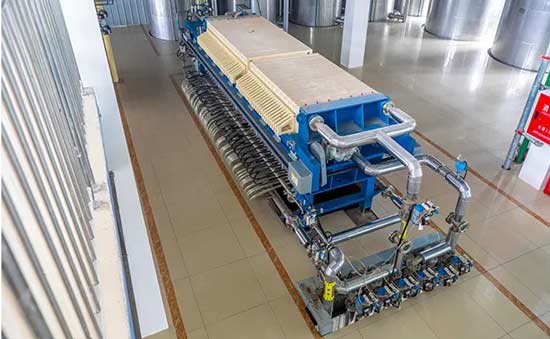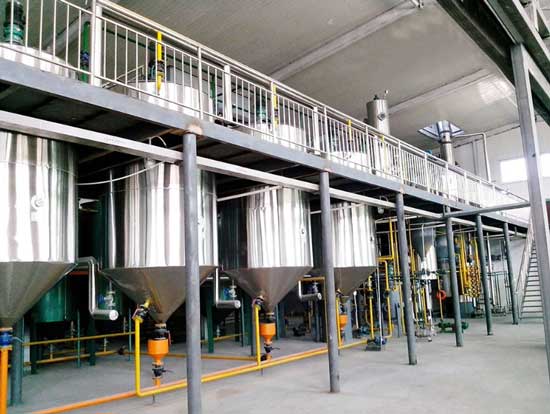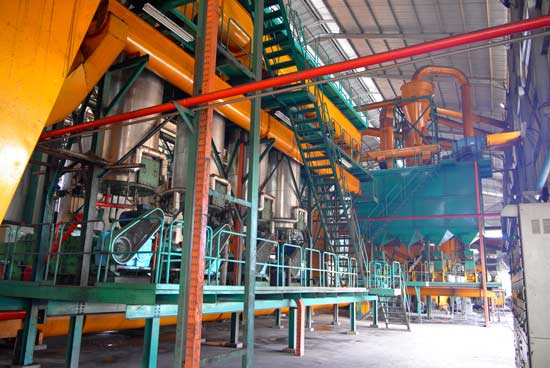Corn germ oil refinery plant process flow: Crude corn oil → Degumming → Deacidification → Washing and drying → Decolorization → Filtration → Deodorization → Filtration → Refined corn germ oil
1. Hydration degumming: Usually high-temperature hydration process is used, the oil temperature is 70℃~80℃, the amount of water added is 315 times of the phospholipid content in the oil, the water temperature is about 80℃, and the water is added in one time within 20 min. When the colloid is obviously precipitated, let it settle for 3 hours to 4 hours, and then separate the oil feet.
2. Alkali refining and deacidification: The amount of alkali added should be calculated based on the acid value of crude corn oil or determined by small tests. The lye concentration should depend on the acid value of the crude oil. When the acid value is less than 3, the lye concentration is 7% to 8%; when the acid value is 3 to 5, the lye concentration is 8% to 10%; when the acid value is 3 to 5, the lye concentration is 8% to 10%; When the acid value is 5 to 10, the lye concentration is 10% to 11%; when the acid value is greater than 10, the lye concentration is 12% to 14%, and all the lye should be added at once within 10 minutes. During alkali refining, the initial temperature of crude corn oil is 30°C ~ 40°C, and the final temperature is 60°C ~ 65°C. When the soap particles are obviously precipitated, let them settle for 6 to 8 hours, and then separate the soap stock.
3. Water washing and drying: When washing, adjust the oil temperature to about 85°C, add water with the same temperature as the oil for washing, wash 1 to 3 times according to the situation, and use 10% to 15% of the oil volume each time. Let it stand for about 1 hour after the water has evaporated, and drain off the waste water. The washed oil contains about 0.15% moisture and should be dried. There are two types of drying: normal pressure dehydration and vacuum dehydration. The normal pressure dehydration temperature is 105°C ~ 110°C, and the vacuum dehydration temperature is 90°C ~ 105°C (vacuum degree is 9313 kPa).
4. Decolorization: Activated clay is usually used as the decolorizing agent. The above drying process can be carried out in the decolorization pot. Pump or inhale the washed oil into the decolorization pot. Keep the absolute pressure in the pot below 8 kPa. Heat the oil to above 80°C to start dehydration until the mist in the pot disappears (the moisture content in the oil < 011%), indicating that the dehydration requirements are met. When decolorizing, raise the oil temperature to about 90°C, add activated clay (the amount is 3% to 5% of the oil weight) and mix it thoroughly with the oil. The decolorization time is 20m in to 30m in. After decolorization is completed, the oil is cooled to below 70°C, the vacuum is broken, and the oil is pumped out to filter and separate the clay. If the water-washed oil enters the filter before entering the decolorization pot, it will be better to use the remaining white clay after filtering the previous batch of decolorization oil to pre-decolorize, and then enter the decolorization pot for decolorization.
5. Deodorization: Inhale the decolorized oil into the deodorization pot, keep the absolute pressure in the pot below 113 kPa, the deodorization temperature is 170°C ~ 180°C, and the deodorization time is 3 h ~ 8 h. After deodorization is completed, the oil is cooled to below 70°C and pumped out for filtration, which is the finished oil. Direct steam should be superheated during deodorization to prevent moisture from being brought into the pot.



